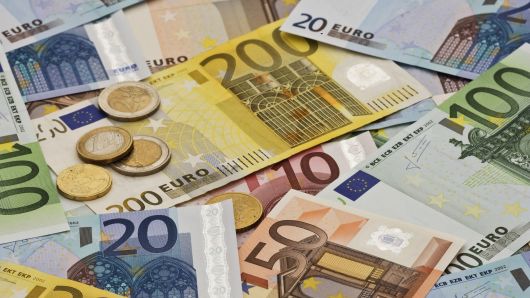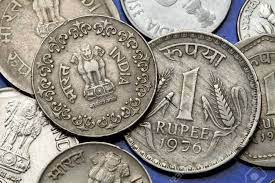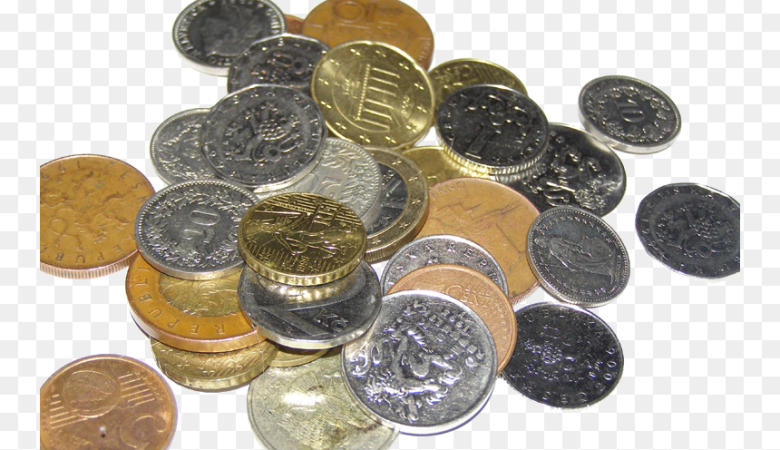Mahajanapada (states) of ancient India – Gandhari, Kundela, Kuru, Panchal, Shakya, Shurasena and Saurashtra. Made of silver of standard weight, but irregularly shaped, these coins had a variety of hallmarks – for example, Saurashtra had a seated goddess and a bull, and Panchal had a swastika.
The term “rupee” in relation to coins was first mentioned in the writings of the ancient Indian linguist Panini in the 6th century BC.
As an adjective, “rupia” means “beautiful” with the narrower meaning “stamped, imprinted”.
In the treatise “Arthashastra”, written by the prime minister of the first king of the Mauryan empire, Chandragupta – Chanakya, (c. 340-290 BC), silver coins – “rupyarupa” are mentioned.
The Kushan kings who came later introduced the European custom of minting portraits or figures of rulers on coins. Their example in India was followed by eight centuries. This tradition of coins with intricate images continued until the arrival of the Muslim Turks in Northern India (1206).
In the 13th century, the Turkic sultans of Delhi replaced the complex Hindu themes on their coins with equally complex Islamic calligraphy. The rise of the Mughal Empire in 1526 led to the creation of a consolidated monetary system for virtually all of India.
The decisive moment in the evolution of the rupee came when, after the victory over Shah Huma Yun, the military leader Sher Shah Suri came to power, founding the last dynasty of the Delhi Sultanate. During his short reign (1538-45), Sher Shah transformed northern India into a prosperous state for his era. He built four major roads that crossed the empire. The roads were planted with fruit trees, and after certain distances they arranged resting places with wells. Sher Shah issued a standard silver rupee weighing 11.3 grams instead of the billon Tanka.
Also began the abundant minting of copper change coins – pike. 1 silver rupee consisted of 40 copper pike. The combination of a developed infrastructure with a stable monetary system ensured the prosperity of domestic and foreign trade.
The colonization of India by the British began in the 17th century. The first trading post was founded in 1611 at Masulipatam on the southeast coast. In 1639, the company received from the Raja of Chandragiri the right to lease the port city of Madras.
There the British built Fort St. George and Madras replaced Masulipatam as the company’s main settlement. The British also received the right to mint coins with the payment of a 1.5% duty to the treasury of the Raja. The first British coins issued in India were golden pagodas, similar to those of the Vijayanagar kings who were overlords of the Raja of Chandragiri.
By the time the East India Company established itself in India, Sher Shah’s silver rupee had already become a popular currency in the country. Despite numerous attempts to introduce the pound sterling in India, the popularity of the rupee grew, and the British even exported it as currency to other British colonies. Formally, the name of the Shah was engraved on the coins of English minting.
In 1870, the system of the rupee and its fractions was finally established: 1 rupee \u003d 16 annas \u003d 64 paisa \u003d 192 shares. Silver coins were rupees and their derivatives – 1/2 rupee, 1/4 rupee, 1/8 rupee and 2 annas. Minted from copper or bronze: 1/2 anna, 1/4 anna and 1/12 anna, double paisa, paisa, half paisa.
In the first half of the 20th century, only the metal from which certain denominations were minted changed. In 1924, the gold content of the rupee was raised to 0.549 g.
After a long struggle for national independence, on August 15, 1947, India gained state sovereignty. After that, its monetary system remained unchanged for some time: 1 rupee consisted of 16 annas and 64 pike.
In order to help blind citizens, each denomination had a unique shape and size. 1 new pica was round, 2 new pike had a wavy edge, 5 new pike was in the shape of a square, 10 new pike also had a wavy edge, but the coin itself was larger.
A serious economic problem of India throughout the entire period of independence is the devaluation of the rupee. The Reserve Bank of India periodically denominates the rupee and issues banknotes of new designs and denominations. In connection with the devaluation of the rupee, the metal for minting Indian coins was regularly changed.
If in the first years of independence, coins were minted from expensive non-ferrous metals and alloys – brass, cupronickel bronze, nickel, then later the Reserve Bank of India began to issue coins mainly from aluminum and electroplated steel.
The exception is large denominations – 5, 10 and 20 rupees, which are minted from nickel brass and bimetal. Currently, paisa’s are practically out of use. Today, coins of 1, 2, 5, 10 and 20 rupees are in regular circulation. Prices in stores are usually rounded up to 50 paisa, although a coin of the corresponding denomination is very rarely found in circulation.
In 2010, in honor of the 75th anniversary of the Reserve Bank of India, the Tigers series of coins was issued.
Currently in circulation are banknotes of the Indian rupee of the Mahatma Gandhi series, issued in 2016-2019: 10, 20, 50, 100, 200, 500 and 2000 rupees. Banknotes differ in color and pattern on the reverse side.
The reverse of the 10 rupee banknote is decorated with the Dharma chakra – the “wheel of law” from an ancient temple of the 13th century. On 20 rupees, the cave city of Ellora (VI-IX centuries), included in the UNESCO World Heritage List, is depicted. The banknote of 50 rupees is dedicated to another unique monument – a stone chariot from the capital of the Vijayanagar empire.





